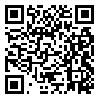Volume 16, Issue 3 (Aug 2022)
payavard 2022, 16(3): 229-240 |
Back to browse issues page
Ethics code: IR.BPUMS.REC.1400.010
Download citation:
BibTeX | RIS | EndNote | Medlars | ProCite | Reference Manager | RefWorks
Send citation to:



BibTeX | RIS | EndNote | Medlars | ProCite | Reference Manager | RefWorks
Send citation to:
Motayerzadeh S, Tahmasebi R, Kavehie B, Noroozi A. Predictive Power of Extended Parallel Process Model (EPPM) for Acceptance of Covid-19 Vaccine in Residents of Bushehr Province. payavard 2022; 16 (3) :229-240
URL: http://payavard.tums.ac.ir/article-1-7277-en.html
URL: http://payavard.tums.ac.ir/article-1-7277-en.html
1- Master of Sciences Student in Health Education, School of Health, Bushehr University of Medical Sciences, Bushehr, Iran
2- Professor, Department of Epidemiology and Biostatistics, School of Health, Bushehr University of Medical Sciences, Bushehr, Iran
3- Assistant Professor, National Organization for Educational Testing (NOET), Tehran, Iran
4- Professor, Department of Health Education and Health Promotion, School of Health, Bushehr University of Medical Sciences, Bushehr, Iran ,a.noroozi@bpums.ac.ir
2- Professor, Department of Epidemiology and Biostatistics, School of Health, Bushehr University of Medical Sciences, Bushehr, Iran
3- Assistant Professor, National Organization for Educational Testing (NOET), Tehran, Iran
4- Professor, Department of Health Education and Health Promotion, School of Health, Bushehr University of Medical Sciences, Bushehr, Iran ,
Abstract: (1067 Views)
Background and Aim: Vaccination is one of the most effective preventive measures to control of infectious diseases. To create effective interventions for the acceptance of the COVID-19 vaccine, it is important to identify the factors that affect the vaccine acceptance. The aim of this study was to determine the predictive power of the Extended Parallel Process Model (EPPM) for acceptance of Covid-19 vaccine.
Materials and Methods: In this cross-sectional study, 1455 people over 18 years old covered in health centers living in Bushehr province in cities of Bushehr, Genaveh, Tangestan, and Asaluyeh in 2021 were selected by convenience method. Data collection was online by using questionnaire included three sections comprised of demographic factors, questionnaire related to model constructs, and self-administered questionnaire related to acceptance of Covid-19 vaccine. Data were analyzed using chi-square, two independent sample T-test and logistic regression; in SPSS software.
Results: Out of 1455 participants, 1067 persons (73.3%) had been vaccinated. The results showed that men (P=0.006), people with higher education (P=0.001), government employees (P=0.001), single people (P=0.01), people with history of specific disease (P=0.05), individuals with a history of Covid-19 positive test (P=0.001) and their family (P=0.03) were more than other vaccine recipients. Perceived severity, response efficacy and perceived self-efficacy were predictors of vaccine acceptance. Predictive variables and constructs explained 43.8% of changes in vaccine acceptance. Among the participants in the study, 1366 (93.9%) were in the fear control process, in which the highest defense response has been avoided.
Conclusion: In order to increase the acceptance of the vaccine, the efficacy and effectiveness of the vaccine and the severity of the complications of the disease should be emphasized. Therefore, public health campaigns aimed at increasing vaccine acceptance should provide a high level of transparency about the safety and effectiveness of vaccines to the community.
Materials and Methods: In this cross-sectional study, 1455 people over 18 years old covered in health centers living in Bushehr province in cities of Bushehr, Genaveh, Tangestan, and Asaluyeh in 2021 were selected by convenience method. Data collection was online by using questionnaire included three sections comprised of demographic factors, questionnaire related to model constructs, and self-administered questionnaire related to acceptance of Covid-19 vaccine. Data were analyzed using chi-square, two independent sample T-test and logistic regression; in SPSS software.
Results: Out of 1455 participants, 1067 persons (73.3%) had been vaccinated. The results showed that men (P=0.006), people with higher education (P=0.001), government employees (P=0.001), single people (P=0.01), people with history of specific disease (P=0.05), individuals with a history of Covid-19 positive test (P=0.001) and their family (P=0.03) were more than other vaccine recipients. Perceived severity, response efficacy and perceived self-efficacy were predictors of vaccine acceptance. Predictive variables and constructs explained 43.8% of changes in vaccine acceptance. Among the participants in the study, 1366 (93.9%) were in the fear control process, in which the highest defense response has been avoided.
Conclusion: In order to increase the acceptance of the vaccine, the efficacy and effectiveness of the vaccine and the severity of the complications of the disease should be emphasized. Therefore, public health campaigns aimed at increasing vaccine acceptance should provide a high level of transparency about the safety and effectiveness of vaccines to the community.
Send email to the article author
| Rights and permissions | |
 |
This work is licensed under a Creative Commons Attribution-NonCommercial 4.0 International License. |






